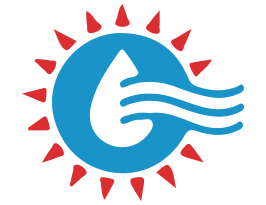
Every day, your sewer line carries away wastewater from sinks, toilets, showers and appliances. It's one of the hardest-working systems in your home, but it rarely gets attention until something goes wrong. When a sewer line backs up, the consequences can range from unpleasant odors to significant property damage. Knowing what to do if your sewer line backs up is vital for protecting your family and your home.
We'll walk you through the signs of a sewer backup, safety steps and professional solutions. By the end, you'll understand what to do immediately after finding a sewage backup, how to protect your health and what resources are available for long-term sewer line care.
Spotting the Warning Signs Early
A sewer backup usually gives off small warnings before it escalates. Recognizing these red flags allows you to react before the situation grows into an emergency. Look out for:
- Multiple drains slowing at the same time
- Gurgling sounds in toilets or sinks
- Water rising in the shower when you flush the toilet
- Lingering foul odors in bathrooms or basements
- Pools of water forming around floor drains
If you notice one or more of these issues, you're likely dealing with a blockage in your main sewer line. Acting quickly will help you avoid bigger hazards.
Step One: Stop Water Usage Immediately
When you discover a backup, the first move is to stop adding more wastewater to the system. Halt all water use in the house: no laundry, no dishwashing and no flushing toilets. This is the most effective way to slow down the problem while you prepare your next steps.
This is the first piece of advice in coping with a sewage backup, as limiting water flow reduces the chance of widespread flooding inside your home.
Step Two: Keep Safety at the Front of Your Mind
Standing water mixed with sewage is unsafe. It can contain bacteria, chemicals and debris. Here’s how to reduce immediate risks:
- Keep kids and pets away from the affected area.
- Wear gloves, boots and old clothing if you must enter.
- Ventilate the area by opening windows.
- Do not use household appliances near the water to avoid electrical hazards.
In cases where water is rising near outlets or electrical panels, turn off the power to that section of the home. If you feel unsafe, leave the area and wait for professionals.
Step Three: Assess If Your Home Is Habitable
One question many homeowners ask during these situations is: Can you stay in a house with a sewer backup? The safest answer is usually no, especially if the contaminated water spreads to multiple rooms. Breathing in sewer gases or touching contaminated surfaces can lead to illness.
If only a small area is affected and you can contain it, you might be able to remain in your home temporarily. However, for larger backups, consider alternative housing until the sewage cleanup is complete and surfaces are disinfected.
Step Four: Contact a Professional Plumber Right Away
While DIY tools like plungers and store-bought cleaners can handle minor clogs, a sewer backup requires professional help. An experienced plumber can perform a sewer camera inspection to identify the problem and recommend the right solution.
Some of the most effective methods include:
- Sewer cleaning services to clear grease, paper or debris
- Trenchless sewer repair for repairing damaged pipes without tearing up your yard
- Sewer line replacement if your pipes are severely corroded or collapsed
- Hydro jetting for heavy grease and buildup
Calling for help quickly is key. Professionals know what to do after a sewer backup, and they have the equipment to fix the underlying issue, not just the symptoms. If you need a professional sewer cleaning in Pittsburgh, reach out to Gillece Services right away.
Step Five: Protect Your Property and Call Your Insurance Company
Sewer backups can cause water damage to drywall, flooring and even structural materials. After securing professional help, reach out to your insurance company. Some policies cover sewer backup coverage, but not all do. It’s important to know what your insurance policy includes.
Document everything: take photos, save receipts and keep detailed notes of any cleanup services or restoration costs. This information will be essential if you file a claim.
Step Six: Start Cleanup With Caution
For minor issues, you may be able to start cleanup before professional help arrives. Use a strong disinfectant or diluted bleach on small areas. Mop up standing water with disposable cloths, and bag any contaminated carpets or debris. Always wear protective gear.
For larger issues, professional sewage cleaning or biohazard cleanup services are the safest choice. These teams have specialized equipment for water extraction, drying and disinfection, which prevents mold growth and long-term damage.
Common Causes of Sewer Backups
Understanding what causes backups helps with prevention. The most common culprits include:
- Tree roots infiltrating cracked pipes
- Grease, cooking oil and debris solidifying in the system
- Heavy rain overwhelming city sewer systems
- Collapsed or corroded cast iron or clay pipes
- Improper disposal of toilet paper, wipes or hygiene products
Knowing these causes helps homeowners take preventive steps. Regular sewer line maintenance can catch many of these issues before they escalate.
Prevention Tips for Homeowners
After you’ve been through a backup once, prevention becomes a top priority. Here are practical steps:
- Schedule routine sewer line inspection appointments.
- Invest in a backflow prevention device.
- Avoid pouring grease down drains.
- Dispose of wipes, diapers and sanitary products in the trash.
- Be mindful of where you plant trees and shrubs near sewer lines.
These habits greatly reduce your chances of dealing with a repeat event. Prevention is part of coping with a sewage backup, because it helps homeowners avoid the cycle of damage, cleanup and repair.
Final Thoughts on Sewer Backups
No homeowner ever wants to deal with sewage in the house, but it does happen. Knowing what to do if your sewer line backs up helps reduce stress and gives you clear steps to follow. From shutting off water to calling experts, your actions in the first few minutes matter.
Once the backup is handled, the next steps — disinfecting, checking for mold, reviewing insurance and scheduling preventive maintenance — are just as important. Understanding what to do immediately after finding a sewage backup will make you better prepared if it happens again.
Call Gillece Services for Sewer Line Help
When sewer lines fail, quick action and the right professional support are everything. Gillece Services provides a wide range of solutions, including trenchless sewer repair in Pittsburgh, PA, to restore your home’s plumbing system.
Now that you know what to do if your sewer line backs up, why wait? Contact Gillece today to schedule your inspection, cleaning or repair! Voted Best Plumber in 2024 by the TRIBLive & Observer-Reporter. We’ll get your home back to being safe, sanitary and comfortable for your family.





